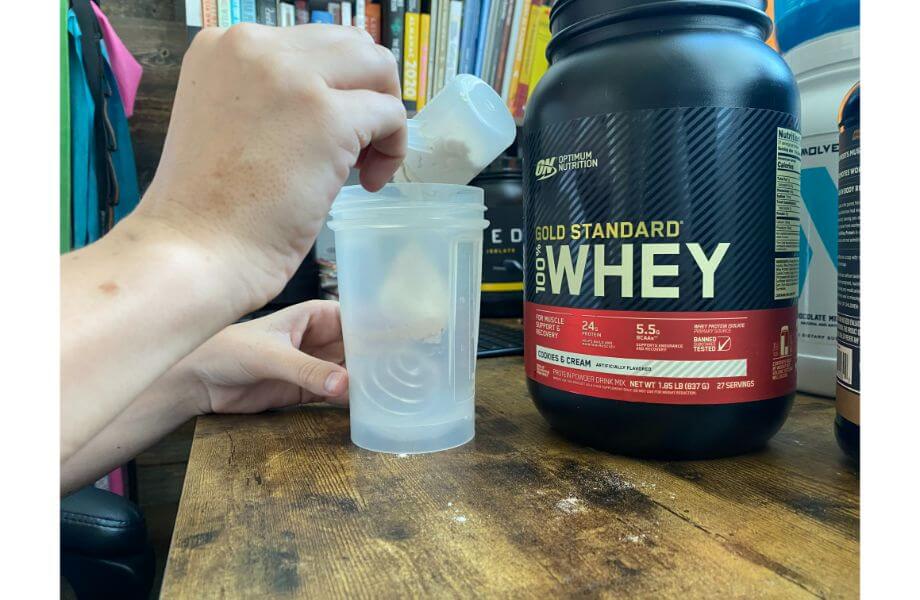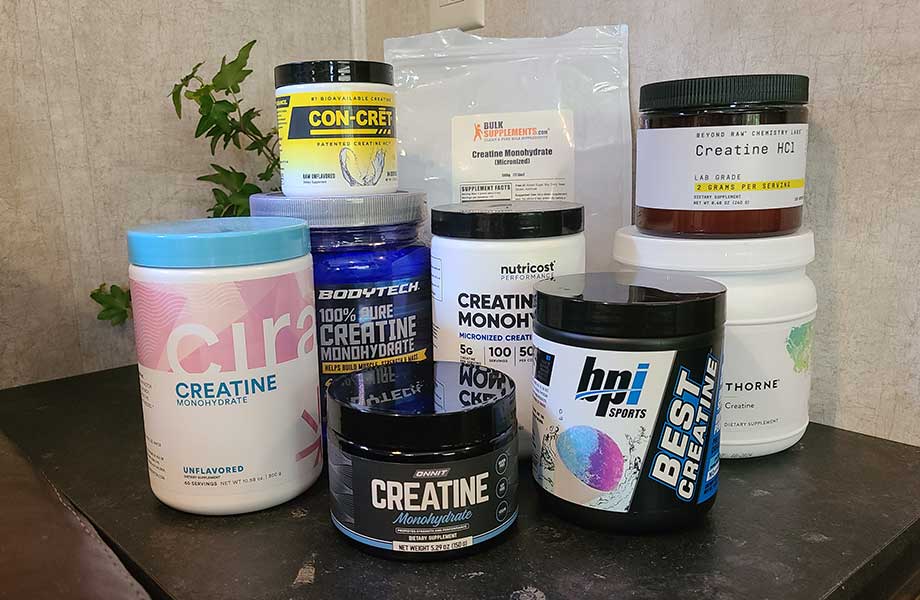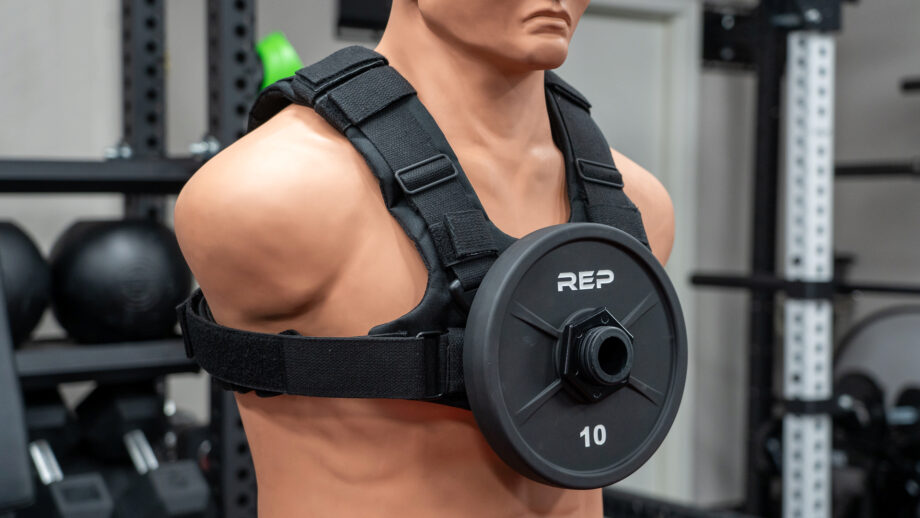If you’re looking for a high-quality protein powder to supplement your resistance training regimen, chances are you’ve heard of whey protein. Whey protein is widely consumed as a nutritional supplement because it’s thought to enhance strength and muscle mass when combined with heavy lifting1.
With so many protein supplement options to choose from, it’s important to know what makes whey different from other choices. Understanding where whey protein powder comes from, the different types, and how it benefits the body, will help you decide if it’s the right fit for you.
Keep reading to learn the answer to the question, “What is whey protein?” so you can make informed decisions when supplement shopping.
Medical disclaimer: This article is intended for educational and informational purposes only. It is not intended as a substitute for medical advice. For health advice, contact a licensed healthcare provider.
What Is Whey Protein?
Dairy milk contains two families of proteins: casein protein and whey protein. Whey is the liquid part of milk that separates from the curds during the cheesemaking process. Once the liquid is collected, carbohydrates, fat, and water are removed, and the remaining protein is dried into a powder.
Whey protein includes beta-lactoglobulin, alpha-lactalbumin, bovine serum albumin, and immunoglobulins, proteins that play a role in many biological activities that support a healthy immune system and prevent disease2.

Considered a complete protein, whey contains all nine essential amino acids, including branch-chain amino acids (BCAAs). Leucine, a BCAA that is in higher concentrations in whey protein than other protein powder options, has been shown to play an important role in the activation of muscle protein synthesis3.
RELATED: Best BCAA Supplements
Whey is classified as a “fast” protein because it is rapidly digested, increasing blood amino acid concentrations shortly after consumption. A 2016 study3 showed that greater levels of BCAAs were available at 30 minutes, 60 minutes, and 90 minutes after a workout when whey was consumed compared to casein and soy protein.
Types of Whey Protein
There are three types of whey protein: whey protein isolate, whey protein concentrate, and whey protein hydrolysate. Although their nutrition content is slightly inconsistent, there’s no significant evidence showing the various forms of whey protein have different effects on the body.
Whey Protein Isolate
Whey protein isolate (WPI) is believed to be the highest quality whey protein because it contains the greatest concentration of protein and leucine and the lowest amount of fat. WPI has been heavily filtered to remove most of the fat and lactose content from the whey. Lactose is a natural sugar found in milk.
The remaining substance is dried into a powder and consists of at least 90% protein2. WPI may be the best choice for those strictly monitoring their fat and lactose consumption, however, it does tend to be the more expensive option.
RELATED: Best Protein Powder
Whey Protein Concentrate
Whey protein concentrate (WPC) requires less processing and contains more fat and lactose than WPI. WPC can greatly vary in protein content. More concentrated WPC may contain up to 80% protein, while less concentrated options only contain 35%2. Although WPI is considered higher quality, the amino acids found in WPC are the same.
Many whey protein supplements combine WPI and WPC.

Whey Protein Hydrolysate
Whey protein hydrolysate (WPH) is the easiest to digest because the protein has already been partially broken down through hydrolysis. Protein breaks down into smaller peptides and ultimately into amino acids.
The body doesn’t have to digest WPH to the same degree as the others, therefore it is more often used in infant formulas and with patients who have gastrointestinal complications.
Health Benefits of Whey Protein
Whey offers health benefits beyond the benefits of protein from many other protein sources due to its unique BCAA profile and ability to quickly digest. Muscle growth, weight loss, and increased satiety are a few of the main benefits that may result from ingesting whey protein.
Muscle Growth
A high-protein diet supplemented with whey protein suppresses muscle protein breakdown and may result in a positive net protein balance that stimulates muscle protein synthesis (MPS) and results in muscle growth4. Supplementing with whey protein could help ensure enough total protein is consumed throughout the day to generate muscle building.
Whey protein is rapidly digested and contains significant amounts of leucine, making it highly effective at stimulating MPS1. For this reason, it’s the ideal post-workout supplement, as it jumpstarts muscle repair and the rebuilding process.
When compared to soy, egg, and wheat protein sources, whey contains the most leucine and increases MPS the most1. One study5 demonstrated that whey consumption after resistance exercise resulted in MPS 122% greater than casein protein and 31% greater than soy protein.
Satiety
Protein improves satiety keeping you feeling fuller for longer. Research2 indicates that whey is more satiating than casein, based on ratings of fullness by subjects, hormone responses, and increases in amino acids in the blood post-meal.
Amino acid absorption and hormone secretion play a role in the increased satiety response to whey. Cholecystokinin and GLP-1, hormones linked to feelings of fullness, are secreted in greater amounts after consuming whey over casein3.

Weight Loss
Consumption of whey protein may result in fat loss due to increases in satiety, lean mass, and the thermic effect of food (TEF). Improved satiety between meals may result in eating fewer total calories throughout the day.
The high leucine content of whey protein has been shown to build lean muscle mass while inadvertently decreasing body fat1. Increasing muscle size may enhance metabolism because it takes more energy to build and maintain lean mass than fat.
Furthermore, whey protein may aid in weight loss because it elicits a greater TEF6 than protein composed of casein or soy. Simply put, whey protein requires more energy (calories) to be digested and absorbed, which could slightly boost metabolism.
RELATED: Best Protein Powder for Weight Loss
Blood Sugar Regulation
Whey protein may help to regulate blood sugar levels following a meal. A 2022 study7 with 15 participants showed that consuming 15 grams of whey protein before meals resulted in a reduced risk of high blood sugar after eating. Whey protein intake before a meal also reduced average blood sugar levels throughout the entire day.
It’s thought that increases in GLP-1 secretion resulting from whey protein ingestion may enhance glucose sensitivity and delay gastric emptying7. This could reduce increases in blood sugar and allow the body to maintain better blood sugar control.
Possible Side Effects of Whey Protein
Lactose is the main carbohydrate in whey protein and may cause discomfort in those who are lactose intolerant. Side effects such as gas, bloating, diarrhea, and stomach cramps can occur if lactose is ingested. Some people who are lactose intolerant may be able to tolerate whey protein isolate because it contains much less lactose than whey protein concentrate.
Additionally, those who are allergic to milk should not consume whey protein. Since whey is derived from milk, it may cause hives, facial swelling, rashes, or throat and tongue swelling in those with a milk allergy. More serious reactions like anaphylaxis can occur.
Protein powders are not regulated by the FDA, so there is no way to know if a protein powder contains what manufacturers claim. Some protein powder supplements may contain heavy metals and other contaminants that could be harmful. If you choose to consume dietary supplements such as protein powder, look for supplements with the NSF label. We always recommend choosing supplements that have been third-party tested for purity.
What Is Whey Protein: Final Thoughts
Whey protein is a popular nutrition supplement for athletes looking to build muscle and recover more quickly after a workout. Not all whey protein is the same, and variations depend on how heavily the whey has been filtered. Since whey protein is quickly digested, amino acids are available rapidly, which may contribute to increased muscle mass, satiety, and weight loss.
In many ways, whey outperforms protein from casein, soy, wheat, and eggs. It is commonly the preferred protein option for athletes due to its high leucine content. Although there are not many known side effects related to whey protein consumption, those who are lactose intolerant or have a milk allergy may need to avoid whey.
- Whey is derived from cow’s milk and contains lactose
- Whey protein isolate is the highest quality whey because it contains the most protein
- Whey is rich in leucine, a BCAA known to activate MPS
- Whey protein may stimulate MPS more than casein and soy
- Whey protein may result in greater satiety than casein and soy
What Is Whey Protein: Q&A
What does whey protein do for you?
Supplementing with whey protein could help you reach your protein intake goals. Whey protein may support muscle building, changes in body composition and body weight such as losing or gaining weight, and increased satiety. Whey protein provides your body with the essential amino acids needed for tissue repair and maintenance.
What’s the difference between protein and whey protein?
Protein supplements can be made from a variety of different protein sources such as soy, casein, and whey. Casein and whey are milk proteins and are both byproducts of cheese production.
Whey is digested more quickly than other types of protein, allowing amino acids to be absorbed more quickly. Whey contains higher concentrations of BCAAs, particularly leucine, which kickstarts muscle protein synthesis.
What does whey protein contain?
Whey protein includes beta-lactoglobulin, alpha-lactalbumin, bovine serum albumin, and immunoglobulins. These proteins support a healthy immune system and prevent disease. As a complete protein source, whey contains all nine essential amino acids. Some lactose and fat remain in whey protein even after the filtering process.
When should I take whey protein?
Taking whey protein after a workout in the form of a shake or a protein bar may improve recovery and increase muscle growth. As a “fast” protein, whey is digested and absorbed quickly, making amino acids like leucine readily available to stimulate muscle protein synthesis for improved muscle strength and size.
These statements have not been evaluated by the Food and Drug Administration. This product is not intended to diagnose, treat, cure, or prevent any diseases.
References
- Jäger R, Kerksick CM, Campbell BI, et al. National Society of Sports Nutrition Position Stand: protein and exercise. J Int Soc Sports Nutr. 2017;14:20. doi:10.1186/s12970-017-0177-8
- Madureira AR, Pereira CL., Gomes AMP, Pintado ME, Xavier Malcata F. Bovine whey proteins – Overview on their main biological properties. Food Res Int. 2007;40(10):1197-1211. doi:10.1016/j.foodres.2007.07.005
- Kanda A, Nakayama K, Sanbongi C, Nagata M, Ikegami S, Itoh H. Effects of Whey, Caseinate, or Milk Protein Ingestion on Muscle Protein Synthesis after Exercise. Nutrients. 2016;8(6):339. Published 2016 Jun 3. doi:10.3390/nu8060339
- Tipton KD, Hamilton DL, Gallagher IJ. Assessing the Role of Muscle Protein Breakdown in Response to Nutrition and Exercise in Humans. Sports Med. 2018;48(Suppl 1):53-64. doi:10.1007/s40279-017-0845-5
- Tang JE, Moore DR, Kujbida GW, Tarnopolsky MA, Phillips SM. Ingestion of whey hydrolysate, casein, or soy protein isolate: effects on mixed muscle protein synthesis at rest and following resistance exercise in young men. J Appl Physiol(1985). 2009;107(3):987-992. doi:10.1152/japplphysiol.00076.2009
- Acheson KJ, Blondel-Lubrano A, Oguey-Araymon S, et al. Protein choices targeting thermogenesis and metabolism. Am J Clin Nutr. 2011;93(3):525-534. doi:10.3945/ajcn.110.005850 2009;107(3):987-992. doi:10.1152/japplphysiol.00076.2009
- Smith K, Taylor GS, Brunsgaard LH, et al. Thrice daily consumption of a novel, premeal shot containing a low dose of whey protein increases time in euglycemia during 7 days of free-living in individuals with type 2 diabetes. BMJ Open Diabetes Research and Care 2022;10:e002820. doi: 10.1136/bmjdrc-2022-002820







